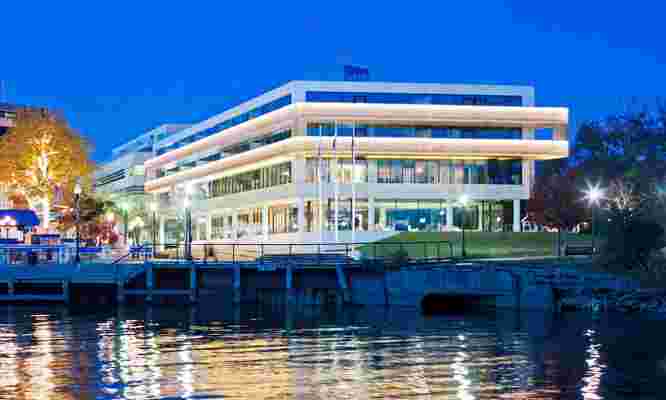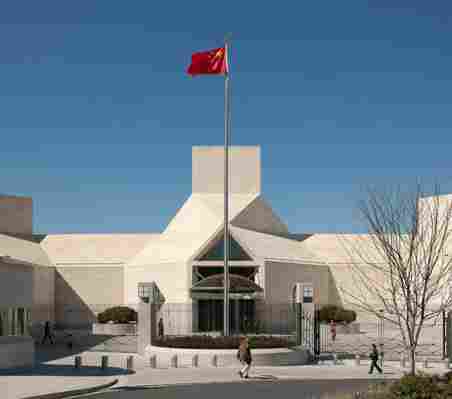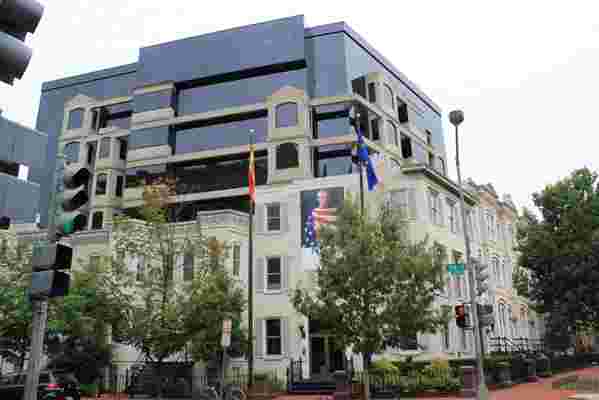7 Architecturally Significant Embassies in Washington, D.C.
In the late 19th and early 20th centuries, Washington, D.C.’s elite swept up land along Massachusetts Avenue and built palatial estates. The street earned the nickname Millionaires’ Row and became synonymous with luxury and Beaux Arts opulence. Though the Great Depression caused most Massachusetts Ave. homeowners to sell their properties, many historic homes in the neighborhood are still intact, and some have been transformed into international embassies. In recent years, countries have introduced their ambassadorial presence in D.C. by with modern structures designed by some of the world’s top architects. It’s no wonder, then, that Embassy Row—as it’s known today—and its neighboring streets are popular destinations for architecture enthusiasts visiting the nation’s capital. But with the city’s embassy count now surpassing 170, deciding which sites to visit can be daunting. So we’ve gone ahead and selected D.C.’s seven most architecturally compelling embassies that are sure to earn a place on your itinerary.

House of Sweden Home to the embassies of both Sweden and Iceland, House of Sweden was designed by Gert Wingårdh and Tomas Hansen and was inaugurated in 2006. Regarded as a prime example of contemporary Swedish architecture, the facility was honored with the prestigious Kasper Salin Prize for best building in 2007. houseofswedenom
This content can also be viewed on the site it originates from.
Embassy of Finland Located across the street from the Vice President’s residence on Massachusetts Avenue, this embassy was the first in the U.S. to receive LEED certification for green buildings. Resembling a modern cabin in the woods, the structure was designed by Finnish architects Mikko Heikkinen and Markku Komonen. finlandrg
This content can also be viewed on the site it originates from.
Embassy of Brazil Designed by Brazilian architect Olavo Redig de Campos, the embassy’s Chancery building is a glass-and-steel construction that embodies the principles of 1970s contemporary Brazilian architecture. It sits adjacent to the ambassador’s neoclassical residence, which was designed by John Russell Pope. washington.itamaraty.gov.br
This content can also be viewed on the site it originates from.
Embassy of Indonesia The Beaux Arts–style mansion that now houses the Embassy of Indonesia has a colorful history. Originally constructed as a private residence, the building—listed on the National Register of Historic Places—was once home to the Hope Diamond and its owner Evalyn Walsh McLean, as well as the American Red Cross. embassyofindonesiarg

Embassy of China Made of French limestone to complement the city’s surrounding landmarks, China’s embassy was designed by Pritzker Prize winner I. M. Pei. The building opened in 2009 and merges traditional Chinese aesthetics with contemporary flair. Landscape architecture also plays a key role, with a Chinese garden installed between the embassy’s two office wings. china-embasrg

Embassy of Spain and the Ambassador’s Residence Spain holds three embassy buildings in Washington: the former residence of the ambassador, the embassy, and the current residence of the ambassador, which was built in 2004 by Pritzker Prize–winning architect Rafael Moneo. The embassy building is composed of traditional limestone façades topped with a modern, glass-clad addition. exteriores.gobs
This content can also be viewed on the site it originates from.
British Embassy One of the first embassies to be constructed in D.C., the British embassy opened in 1930 and was designed by architect Sir Edwin Lutyens. It is Lutyens’s only structure in North America and a marquee example of Queen Anne architecture. The property is listed on the National Register of Historic Places. gov.uk